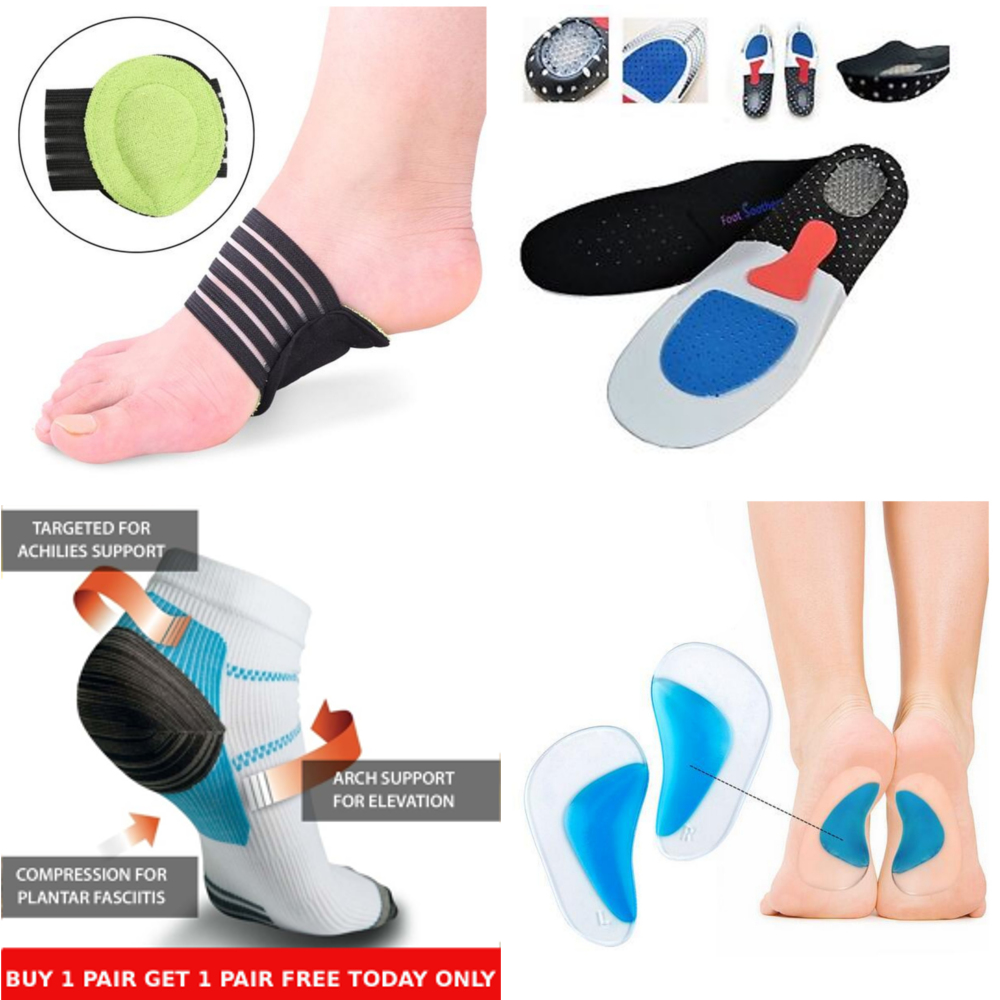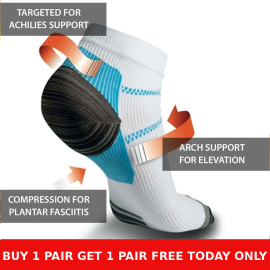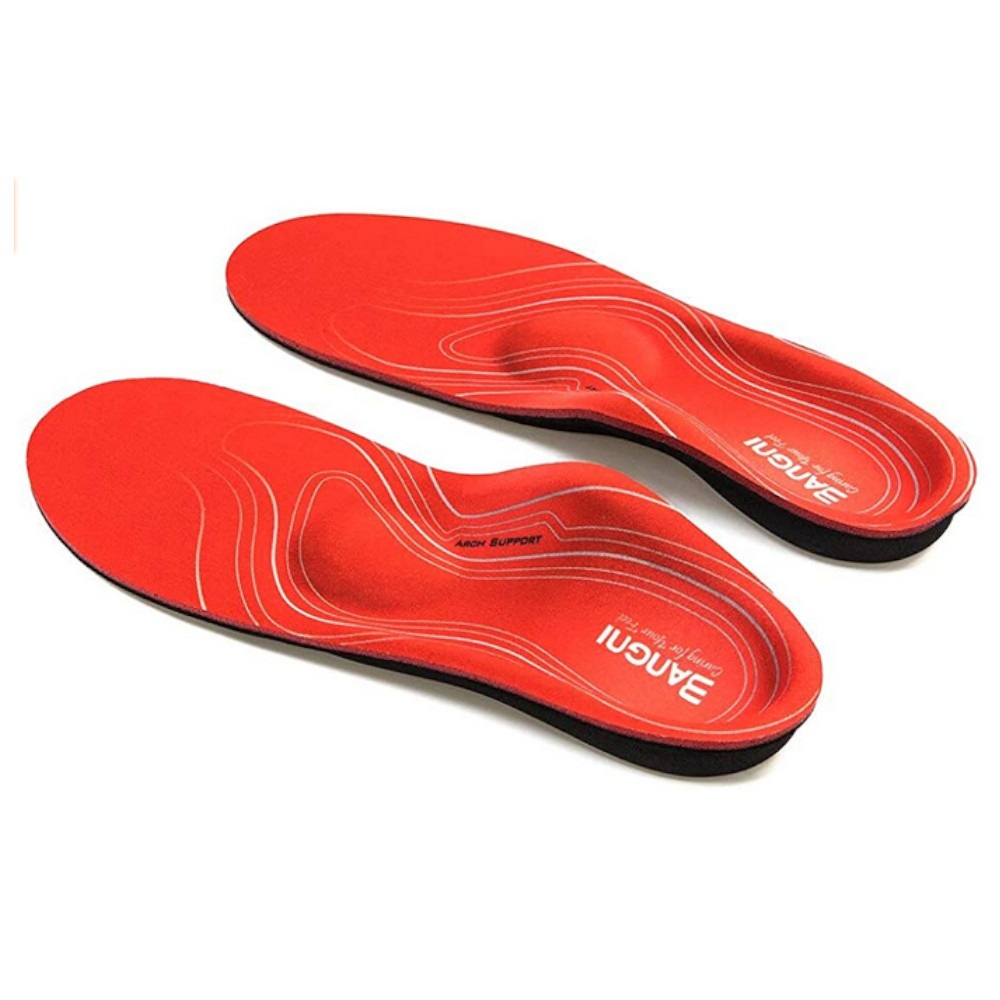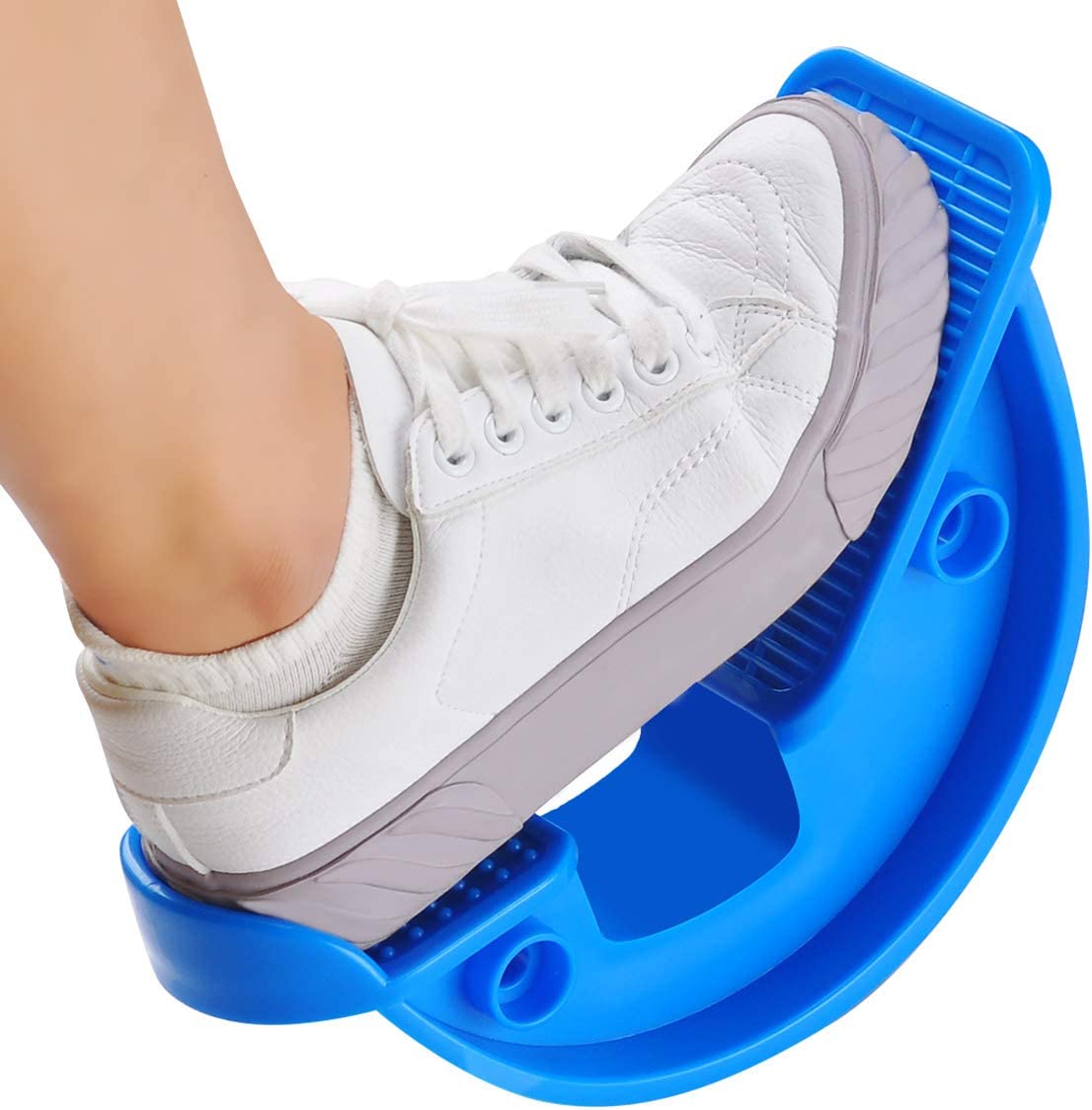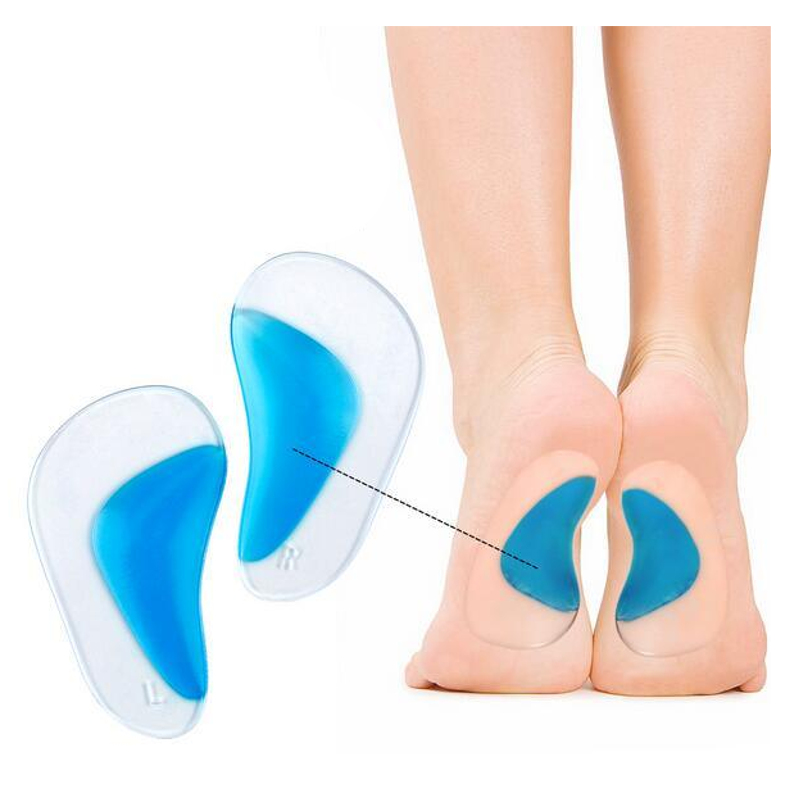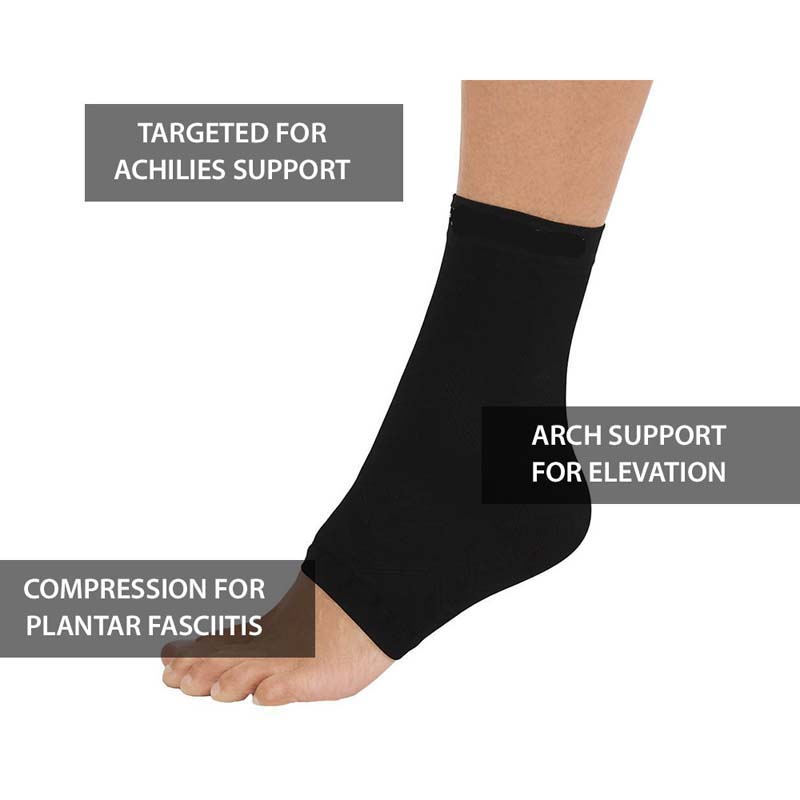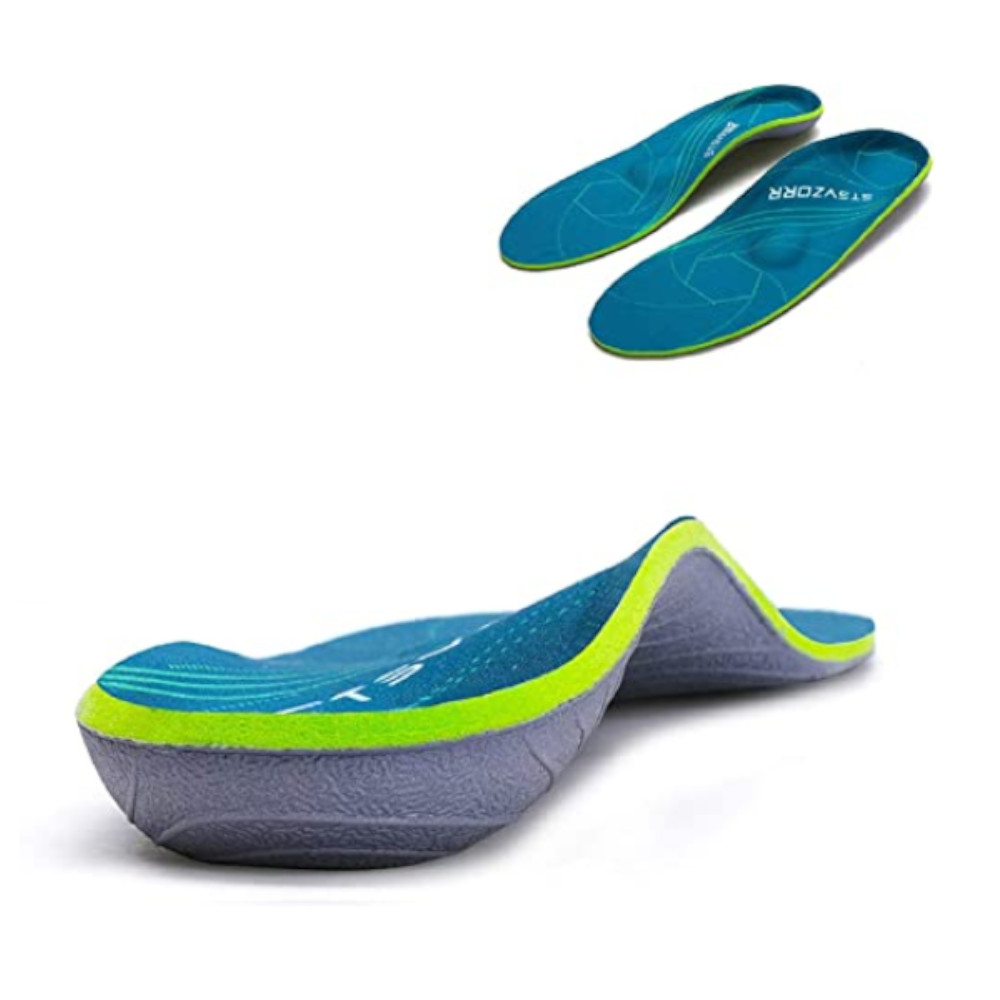Plantar Fasciitis in Athletes Strategies for Recovery

Featured Products for Plantar Fasciitis Foot Pain Relief
For athletes, the pain and discomfort of plantar fasciitis can be a significant hurdle, impacting both performance and training. Plantar fasciitis, characterized by inflammation of the plantar fascia, can be particularly challenging for individuals engaged in high-impact sports. In this blog post, well explore strategies specifically tailored to athletes to help manage and recover from plantar fasciitis.
Understanding the Athletes Challenge:
Athletes, especially those involved in running, jumping, or other high-impact activities, are at an increased risk of developing plantar fasciitis. The repetitive stress on the feet and the strain on the plantar fascia can lead to microtears, inflammation, and heel pain. Effective management is crucial to prevent long-term issues and maintain peak athletic performance.
Strategies for Recovery:
-
Rest and Modify Activities:
- Athletes often find it challenging to take a break from training, but rest is a critical component of recovery. Modify your training routine to include low-impact activities like swimming or cycling to reduce stress on the plantar fascia.
-
Icing and Contrast Baths:
- Apply ice to the affected area to reduce inflammation. Consider contrast baths, alternating between cold and warm water, to promote blood flow and alleviate pain.
-
Stretching Exercises:
- Incorporate regular stretching exercises into your warm-up and cooldown routines. Focus on stretching the calf muscles, Achilles tendon, and the plantar fascia itself. These stretches help improve flexibility and reduce strain.
-
Strengthening Exercises:
- Strengthen the muscles in the feet and calves to provide better support to the plantar fascia. Toe curls, towel scrunches, and calf raises can be beneficial in building strength.
-
Orthotic Inserts:
- Invest in quality orthotic inserts or custom-made orthotics to provide additional support and cushioning. Proper arch support can help distribute pressure more evenly across the foot.
-
Choose Supportive Footwear:
- Select athletic shoes with adequate arch support, cushioning, and stability. Replace worn-out shoes regularly to ensure they provide the necessary support.
-
Night Splints:
- Consider using night splints to maintain a gentle stretch on the plantar fascia while sleeping. Night splints can help alleviate morning pain and promote healing.
-
Physical Therapy:
- Consult with a physical therapist experienced in sports injuries. They can provide targeted exercises, manual therapy, and guidance on biomechanics to address the specific needs of athletes with plantar fasciitis.
-
Anti-Inflammatory Medications:
- Nonsteroidal anti-inflammatory drugs (NSAIDs), under the guidance of a healthcare professional, can help reduce pain and inflammation during the recovery process.
-
Massage and Myofascial Release:
- Incorporate massage and myofascial release techniques to alleviate tension in the muscles and promote circulation. Targeting the calves, Achilles tendon, and plantar fascia can be particularly beneficial.
-
Shockwave Therapy:
- In some cases, athletes may benefit from shockwave therapy, a non-invasive treatment that uses acoustic waves to stimulate healing in the affected area.
-
Gradual Return to Activity:
- Once symptoms improve, gradually reintroduce high-impact activities. Start with low-intensity sessions and progressively increase intensity to avoid overloading the plantar fascia.
Professional Guidance:
Athletes dealing with plantar fasciitis should seek professional guidance from a healthcare provider, sports medicine specialist, or a podiatrist. These professionals can provide an accurate diagnosis, tailor a treatment plan to the specific demands of athletic activities, and offer ongoing support to prevent recurrence.
Conclusion:
Recovering from plantar fasciitis as an athlete requires a multifaceted approach that combines rest, targeted exercises, and strategic modifications to training routines. Athletes can manage plantar fasciitis effectively, reduce pain, and resume peak performance. Remember, patience and consistency are key components of a successful recovery journey.
Featured Products for Plantar Fasciitis Foot Pain Relief
Latest Blogs
- Taking a Stand Against Heel Pain: Practical Solutions
- Happy Heels, Happy Life: Banishing Foot Pain for Good
- The Road to Relief: Strategies for Combating Heel Pain
- Heel to Toe Wellness: Tackling Foot Pain Head-On
- Foot Pain Decoded: Understanding the Signals Your Feet Send
- Soothing Steps: Natural Remedies for Heel and Foot Pain
- Putting Your Best Foot Forward: Managing Heel Discomfort
- The ABCs of Happy Feet: Beating Heel and Foot Pain
- From Heel to Toe: Navigating Common Foot Pain Issues
- Taking a Step Back: Causes and Remedies for Heel Pain
- Footloose and Pain-Free: Tips for Happy Heels and Feet
- Soleful Solutions: A Guide to Alleviating Heel and Foot Discomfort
- Stepping Into Comfort: Understanding Heel and Foot Pain
- From Pain to Progress: Inspiring Plantar Fasciitis Journeys
- Living a Full Life with Plantar Fasciitis: Success Stories
- Plantar Fasciitis and Exercise: Finding the Right Balance
- The Impact of Stress on Plantar Fasciitis Symptoms
- Plantar Fasciitis: When to Seek Professional Help
- Inflammatory Foods and Plantar Fasciitis: What to Avoid
- Ergonomics and Plantar Fasciitis: A Comprehensive Guide
- The Importance of Rest in Plantar Fasciitis Recovery
- Traveling with Plantar Fasciitis: Tips for Happy Feet
- Plantar Fasciitis and Your Sleep: Improving Rest Quality
- The Psychological Aspect of Living with Plantar Fasciitis
- Plantar Fasciitis and High-Impact Activities: Navigating Risks
- How to Stay Active with Plantar Fasciitis: Practical Tips
- Plantar Fasciitis and Aging: Strategies for Seniors
- Cryotherapy for Plantar Fasciitis: Icy Relief for Your Feet
- Aquatic Exercise for Plantar Fasciitis: Dive into Healing
- Mindfulness and Meditation for Plantar Fasciitis Relief
- Heel Pain 101: A Guide to Plantar Fasciitis
- Finding Relief - Plantar Fasciitis Home Remedies
- The Emotional Toll of Chronic Plantar Fasciitis
- Post-Workout Foot Care for Plantar Fasciitis Sufferers
- DIY Foot Massage Techniques for Plantar Fasciitis
- From Diagnosis to Recoveryc- Navigating Plantar Fasciitis
- Plantar Fasciitis in Children Signs and Solutions
- Plantar Fasciitis and Weight: Impact on Foot Health
- How Nutrition Affects Plantar Fasciitis Recovery
- Yoga for Plantar Fasciitis: Poses for Pain Relief
- Breaking Down Plantar Fasciitis Myths and Misconceptions
- Plantar Fasciitis Stretches - Daily Routine for Relief
- The Link Between Plantar Fasciitis and Flat Feet
- Plantar Fasciitis in Pregnancy - What to Expect
- Desk Job Dilemma - Coping with Plantar Fasciitis at Work
- Plantar Fasciitis in Athletes Strategies for Recovery
- Massage and Plantar Fasciitis A Soothing Combination
- Plantar Fasciitis at Night: Tips for Better Sleep
- Plantar Fasciitis vs Heel Spurs - Understanding the Difference
- The Role of Stretching in Plantar Fasciitis Recovery
- Running with Plantar Fasciitis: Dos and Donts
- Preventing Plantar Fasciitis: Tips for Foot Health
- Natural Remedies for Plantar Fasciitis You Havent Tried
- Heel Pain Demystified: Plantar Fasciitis Explained
- Best Shoes for Plantar Fasciitis: A Comprehensive Guide
- Managing Plantar Fasciitis Pain: Tips and Tricks
- The Complete Guide to Plantar Fasciitis Treatment Options
- 10 Effective Exercises for Plantar Fasciitis Relief at Home
- Understanding Plantar Fasciitis: Causes and Symptoms
- Why do I get Pain in My Feet at Night
- Is pain in your feet a sign of diabetes
- What causes pain in my feet
- Plantar Fasciitis - Why so Painful
- What is that pain in my heel
- Should I Walk with Foot Pain
- How to Treat Ankle Pain
- 10 Best Exercises of Plantar Fasciitis
- Do Compression Socks Help Foot Pain
- Do Insoles Work for Foot Pain
- Best Stretches for Plantar Fasciitis
- 5 Causes of Plantar Fasciitis
- Do Back Posture Braces Actually Work
- Foot pain from walking
- Best Insoles for Plantar Fasciitis
- Pain in heel of foot after Running
- Treatment for Pain in arch of foot
- Pain on top of foot
- Mortons neuroma treatment
- How to remove an Ingrown Toenail
- Foot Heel Spur Pain
- Sore Foot in the Morning
- Suffer Heel Pain in the Morning ?
- Start a running routine
- Running through Fatigue
- Best Achilles Tendonitis and Ankle Excercises
- Causes of Achilles Tendonitis and Ankle Pain
- Plantar Fasciitis Cure and Treatment
- Best Plantar Fasciitis Products
- Causes of Plantar Fasciitis and Heel Spur Pain
- Best Plantar Fasciitis Excercises

